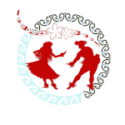In Tahitian dance, Tā’iri tāmau is a fundamental hip movement that plays a vital role in the performance and aesthetics of the dance. It is characterized by its rhythmic, circular motion of the hips, achieved by alternating the weight between the feet while keeping the upper body relatively steady. Here’s a closer look:
Meaning and Technique
- Translation: The term Tā’iri tāmau can be roughly translated to “steady or fixed striking,” reflecting the movement’s consistent and anchored rhythm.
- Execution:
- Dancers slightly bend their knees, maintaining a grounded stance.
- The hips make circular or figure-eight movements that are smooth and continuous.
- The feet alternate weight subtly, creating the foundation for the hip motion without excessive visible movement of the legs.
Cultural and Artistic Significance
- Expression of Rhythm: Tahitian dance is heavily rhythm-driven, and Tā’iri tāmau serves as a key way for dancers to interpret the drum beats and convey the vibrancy of the music.
- Core Movement: It is one of the staple hip movements in ‘Ori Tahiti (Tahitian dance), used in various styles, such as ‘ōte’a (fast-paced dances) and ‘aparima (storytelling dances with slower tempo).
- Foundation for Variations: Tā’iri tāmau can be combined with other movements, such as fa‘arapu (fast, circular hip shakes) or more dramatic steps, showcasing the dancer’s skill and control.
Importance in Dance Training
For beginners and seasoned dancers alike, mastering Tā’iri tāmau is essential. It not only builds core strength and coordination but also enables dancers to create a mesmerizing visual effect, amplifying the connection between their movements and the music.
